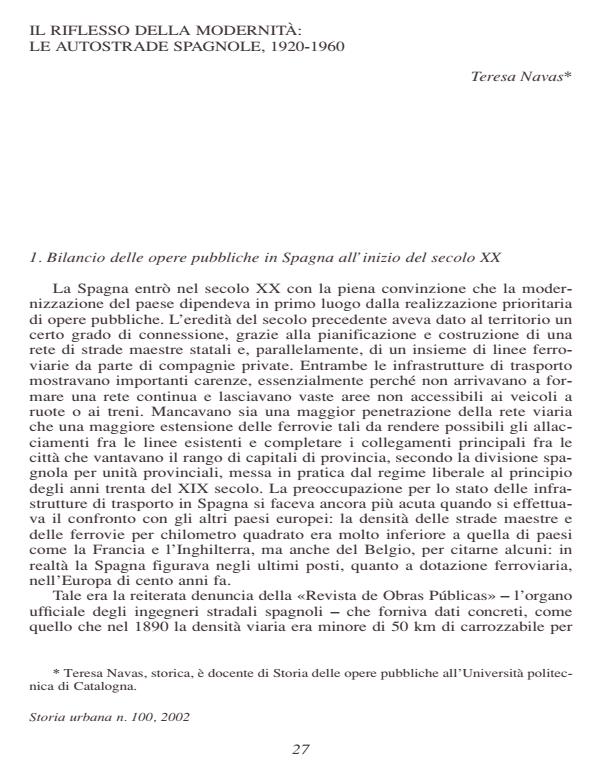Il riflesso della modernità: le autostrade spagnole, 1920-1960
Titolo Rivista STORIA URBANA
Autori/Curatori Teresa Navas
Anno di pubblicazione 2003 Fascicolo 2002/100
Lingua Italiano Numero pagine 28 P. Dimensione file 526 KB
DOI
Il DOI è il codice a barre della proprietà intellettuale: per saperne di più
clicca qui
Qui sotto puoi vedere in anteprima la prima pagina di questo articolo.
Se questo articolo ti interessa, lo puoi acquistare (e scaricare in formato pdf) seguendo le facili indicazioni per acquistare il download credit. Acquista Download Credits per scaricare questo Articolo in formato PDF

FrancoAngeli è membro della Publishers International Linking Association, Inc (PILA)associazione indipendente e non profit per facilitare (attraverso i servizi tecnologici implementati da CrossRef.org) l’accesso degli studiosi ai contenuti digitali nelle pubblicazioni professionali e scientifiche
Spain crossed the threshold of the twentieth century with the clear conviction that the modernisation of the territory by means of public works was a pending issue. The basic road network had by then been planned, though construction was not yet complete, and local networks were still lacking. The railways did not provide full coverage as regards either connectivity or service, and hydraulic works were seen as being essential to the positive exploitation of territorial resources. At the same time, new patterns of mobility were emerging, giving rise to a considerable increase in the number of goods and persons being transported, along with the evolution and integration of the automobile, which rapidly replaced traditional collective means of passenger transport. As a result, it became necessary to extend overland communication networks as well as modernize them in accordance with this new mobility. The response was divided between decisive action on the existing road system and projects for the first motorways that were formulated in the late twenties, though not actually constructed until forty years later.
Teresa Navas, Il riflesso della modernità: le autostrade spagnole, 1920-1960 in "STORIA URBANA " 100/2002, pp , DOI: